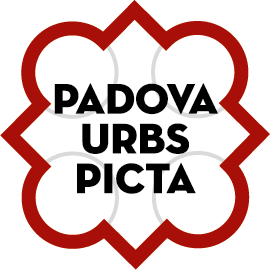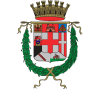The medieval structure was damaged in 1634 by the collapse of the bell-tower, which destroyed the presbytery and sacristy. Reconstruction work would then drag on until 1730, with the project at one point being overseen by the architect Sante Benato, a pupil of Girolamo Frigimelica; according to some, the latter also played a part in the designs.
The imposing facade is dominated by a monumental pediment that stands atop gigantic pilasters and pilaster strips, between which is the large main doorway, which is crowned by a tympanum. The niches in the facade contain eighteenth-century statues of Saint Peter and Saint Paul. The interior is a spacious single nave framed by large Corinthian columns and twelve doors which evoke the description of the Celestial Jerusalem in the Book of Revelation.
The upper part of the walls is adorned with the same number of panels, most of which were painted by Giacomo Ceruti, known as ‘Il Pitocchetto’ because of his genre scenes of peasants “pitocchi”. His panels depict the four patron saints of Padua, the four Doctors of The Church and three of the four Evangelists; the panel depicting St. Luke is a magnificent work by Giovan Battista Tiepolo. Along the nave there are also fine works by Domenico Campagnola and Alessandro Varotari (better known as Il Padovanino).
The altar to the left has a polychrome wooden Crucifix by Giovanni Bonazza. The church also houses the mausoleum of the Minello de Bardi family, the work of the famous sculptors Antonio and Giovanni Bonazza. Within this church are buried Lomardo della Seta, a friend and pupil of Petrarch, and Giovannantonio Volpi, a publisher who played an important part in the cultural life of eighteenth-century Padua.
- DISCOVER
- LIVE
FOCUS
- GET INSPIRED
FOCUS
- INFO
- BOOK NOW












